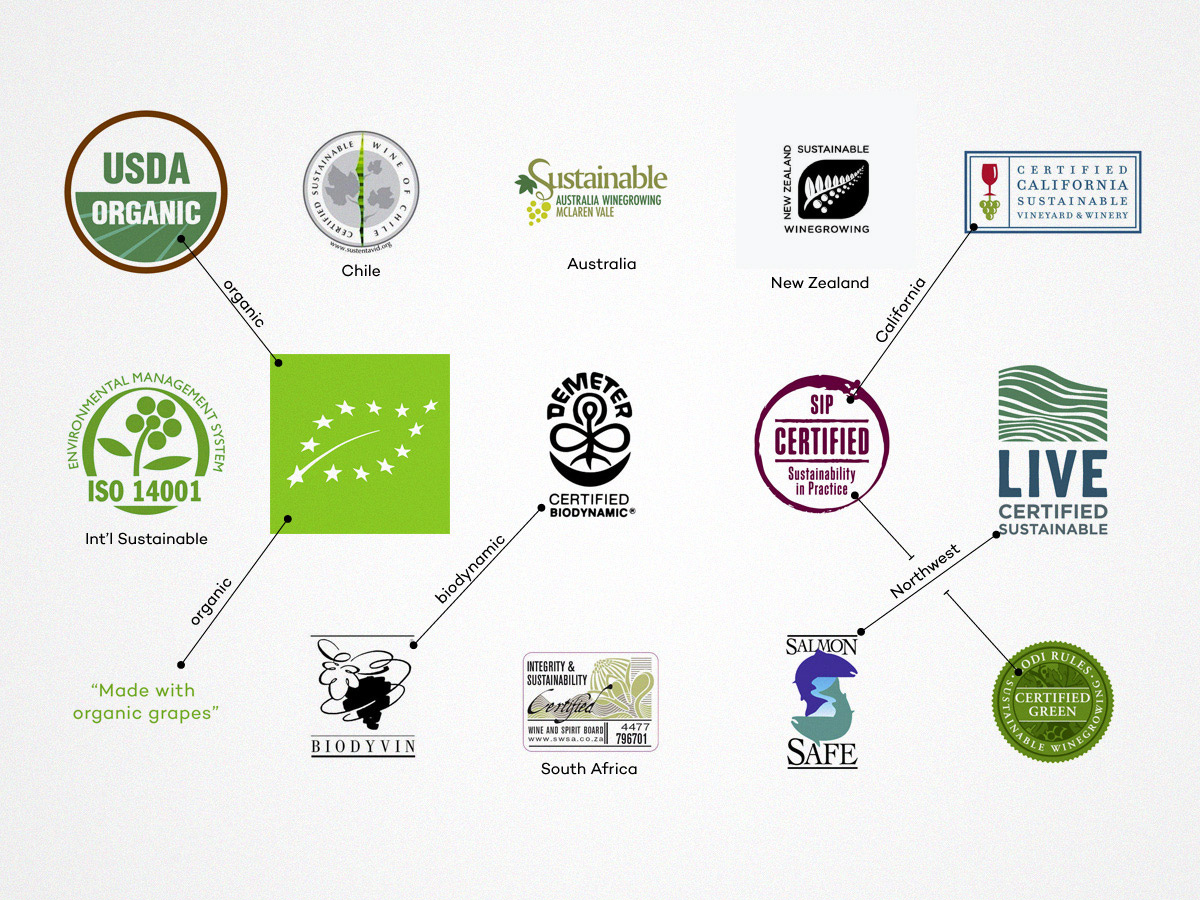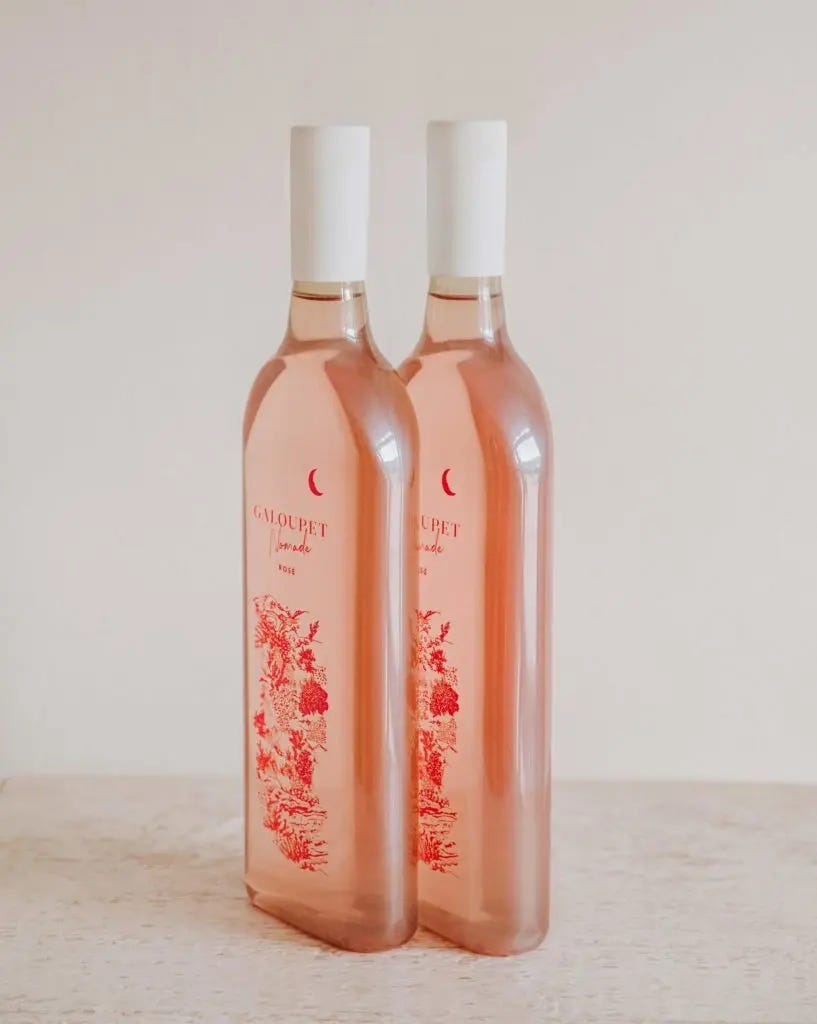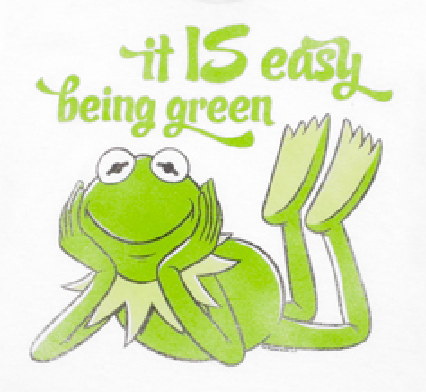Wine Conversations: It's Not Easy Being Green (VI)
Where Do We Go From Here?
This has been an eye-opening conversation for me. It all started with
, who gave us an excellent breakdown of what the many Sustainability Labels in wine were and mean:Then
inspected how loosey-goosey some of these label's criteria truly are (and hysterically awarded himself his own label at the end!): mentioned the elephant in the room - Natural Wine - and brought her American sommelier's pov of "Natty" vs. "Natural" and focused on the importance of learning about and trusting specific importers:Then Natural / Minimal Intervention wine maestro,
spotlighted how these terms are far from marketing terms - they take extreme effort and sacrifice to become certified for, and comsumers shouldn't take these efforts lightly!Lastly,
brought an ex-wine shop/bar owner's perspective, and explored how many vineyards and wineries may not be certified but nevertheless practice organic, biodynamic, minimal intervention, etc. Your local wine shop owner will know which do, though there are layers of trust involved in this, much as there is with certification labels and their regulation.And now, let's bring this home with some final thoughts.
Do Consumers Even Look For These Labels?
I spoke to a number of wine shop owners and sellers and asked them this. The consensus, at least in America, seems to be: no, not really.
Consumers definitely ask which wines are organic, sustainable, or natural, but they do not seem to look for labels on the bottles themsleves.
This was curious behavior in a country (and a State, and a city - Los Angeles) that absolutely looks for the "Organic" label on food, and happily (give or take) pays higher prices for such. It probably helps that when it comes to food, there's generally just the one label: "USDA Organic". Either it's organic, or it's not. Additional terms such as "Cage Free" or "Grain Fed" are for specific types of products - eggs, poultry, beef - and are blessedly self-explanatory. And there's hope these terms will disappear as we move toward a future where all eggs are cage free - California and Michigan, for example, are two states that have already forbidden the sale of non-Cage Free eggs within the state.
Presto! No more label.
For wine, there's simply too many labels, with too many variations on their individual meanings. Consumers would rather talk to a human about it, and happily take the word of the shop person that such-and-such a wine came from the types of sustainable practices they want to support (and consume.)
It also doesn't help that these labels, at least currently, are widely distrusted. Only 5% (you read that right!) of American consumers "completely trust" sustainability labels. Thankfully, 32% "somewhat trust" them. Over in Europe, a commission study from 2020 highlighted that 53.3% of environmental claims reviewed in the EU were found to be "vague, misleading or unfounded” and 40% were 'unsubstantiated'.” A whopping 63% of consumers in the EU believe food brands pretend their products are more sustainable than they really are.
That said, part of the distrust stems from consumers authentically giving a shit: most Americans, as well as most Europeans, say they are willing to pay 10% - 25% more for sustainable products. They say they want to buy these products more often than not, and want to decrease waste and environmentally unfriendly practices within their own homes.
The problem, of course, is the vagueness, the opacity, the byzantine rules and neverending new labels that continue to sprout as time wears on. What we need, ideally, is something more cohesive, and (god forbid) international.
Enter: Regenerative Organic Certification (ROC)
Paso Robles, surprisingly, is the first place to attempt such a combination of certifications into a new (but theoretically solo) label that any vineyard or winery would need. ROC is a set of standards that go beyond traditional organic certification. It focuses on three key pillars: soil health, animal welfare, and social fairness, and leverages existing certifications to avoid duplicative audits and paperwork.
The incredible thing about ROC is that it not only combines Regenerative and Organic, but includes an Animal Welfare and Social Fairness doctrine, including the welfare of workers, living wages, transparency and accountability, and long-term commitments.
The United Nations has called ROC "one of the most effective ways to make food systems more sustainable". Tablas Creek, often a leader in these things, became the first winery to be certified as ROC in 2019, and the first vineyard to be certified in 2020.
At the same time, Caine Thompson, head of sustainability for O'Neill Vintners, saw the opportunity to start the first and largest side-by-side trial of ROC certified practices vs. traditional. He convinced his bosses to allow one third of the Robert Hall's estate vineyards (roughly 140 acres) to be converted into ROC land and wine, while the other two thirds remained traditional.
It's now been 5 years and the trial is aleady providing incredible data and evidence for ROC style viticulture, including:
Costs went up 10% the first year, to cover conversion to ROC standards, but yields also went up 3% - the very first year!
Water retention increased immediately, and has continued to improve year on year.
Quality of the wine has increased year on year.
Cover crop has increased compared to the traditionally farmed vineyard starting the very first year.
The results are very clear: the ROC vineyards increased productivity and quality, and up front costs were recovered within these first 5 years. The parent company, O'Neill, has already begun converting the rest of Robert Hall's estate vineyards to ROC after seeing these results.
Listen to a great interview with Caine Thompson about this 5 year trial here:
One Label to Rule Them All
There is currently talk in Europe about a Natural Wine Certification, a concept that has taken up a lot of debate among winemakers as to whether any of them want such a thing. America already has two certifications available.
When it comes to Natural Wine, specifically, I suspect an ingredient label would work much better - what was added, if anything, and in what amounts? Mostly, people just want to know that the wine is free from additives, minimal sulfites, and perhaps native vs. commercial yeasts. I'm not convinced anyone is truly served by a certification label for those concerns.
But for the rest of it, I would love to see these two biggest - Organic and Regenerative - combine into something like the ROC (or the ROC itself) and adopted as THE standard for the world's wineries and vineyard, in terms of sustainability labels. Possibly different regions will need to tweak the regulations slightly - the needs of different lands may not be precisely the same. But I can foresee a standard label, THE label, that tells consumers that this wine, made from these grapes, is all that they're looking for.
Winemakers can still practice biodynamic and such if they believe in it, but I'm unconvinced the public needs a label for that. And the fewer labels being stamped about, the more trusting consumers will become.
One label to rule them all. The one label consumers would actually look for because it's the only one. And a label that comes with enough rigorous terms but also benefits to any vineyard and winery, that it can pave the way for the industry as a whole.
Post-Script: What About Packaging?
There is, of course, a second elephant in this room, and that's glass bottles. Especially thick, heavy duty glass bottles that leave an intense carbon footprint to move around the globe - and even lightweight bottles only reduce the weight from 2.65 lbs. to 2 lbs. per filled bottle. So that’s no game changer.
There's also the issue that glass - while infinitely recyclable - is difficult to recycle as single color, tinted glass bottles of significant quality. Most wine bottles don't make that cut, and are instead broken down to be used in concrete pavement or tile. Which is a re-use, but not quite a recycle: we still need to make more glass bottles.
85% of wine is made to be consumed young, and usually is within a week of purchase. This puts glass bottles and corks into perspective, and things we should maybe allow the younger generations to not get hooked on. Let them have alternatives. Let them get used to high quality wine in bag-and-box containers. In 100% recyclable PET (polyethylene terephthalate) bottles with screwcaps, in cans especially - 75% of all aluminum is still is use today!!! (Recycling aluminum is more energy-efficient, too.)
Scoff all you want at CANS, and BOXES, and PLASTIC, but this is a new thought. Certainly it isn't where we should put Barolo or top Napa Cabs, but come down from the ultra-premium wine cloud and there's are tanker tons of wine - literally - in need of more sustainable containers.
Let's blaze that path, leave it for the young people to drink because they still have open minds and we won't even be here for whatever solution comes next. This is the way.















Such an interesting point that really resonates with me—consumers care about sustainability and organic practices, yet they don’t necessarily pay attention to certification labels. That’s so true!
I’m not the geekiest wine person out there, but I do love diving deep into these topics. For my WSET Diploma final report, I wrote about environmental certifications in Bordeaux.
Since then, I’ve become increasingly curious about biodynamic viticulture and have visited more than 20 certified biodynamic wineries. Speaking with these producers has only deepened my fascination, drawing me further into the world of biodynamic wines.
I completely understand that certification isn’t everything—but I do see it as an important fact of commitment and dedication. 🌿🍷✨ In situations where I can’t taste every wine available, my curiosity naturally leads me to choose these wines little by little. But of course, it all comes down to personal preference and I also drink wines outside of the certification, though.
Great round-up! But just a note (because no one will say it) that you have a piece of spinach between your teeth... aka a typo in the title!